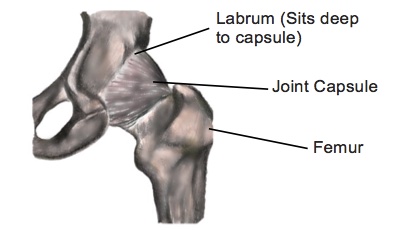CUMBERLAND PHYSIOTHERAPY PARRAMATTA:
What is the labrum of the hip?
The labrum is a fibrous rim of cartilage that covers and seals your hip socket. This lining of cartilage provides stability for the thigh bone (femur) inside of the hip socket (acetabulum), while allowing flexibility.
How do tears happen?
Labral tears can occur from an injury such as a twist, slip, or repetitive stress. For example, athletes such as gymnasts and ballet dancers who have to repeatedly pivot or flex their hip are more likely to damage their labrum than those who do not.
Over time this repetitive impingement of the hip joint can cause the labrum to tear and damage to the labrum if not managed properly a torn labrum may even lead to early degenerative arthritis.
What are the symptoms?
If you are experiencing pain in the front of your hip, along with clicking, locking or catching of your hip joint you may have a tear of the hip labrum. Prolonged sitting, standing, walking or pivoting can cause pain for someone with a labral tear and this may also cause a limp when walking. Other signs and symptoms include joint stiffness or a feeling of instability in your hip.
How can Physiotherapy help?
If your physiotherapist suspects a labral tear, they will perform a series of tests to rule out any other conditions. It can difficult to confirm a diagnosis of a labral tear in the clinics, however if it is suspected, a diagnosis. can be confirmed with medical imaging.
Once a diagnosis has been confirmed, your physiotherapist will aim to reduce your symptoms and help you return to your pre-injury activity levels. Treatment may include a stretching and strengthening program.
They will also address any training errors or neuromuscular imbalances, movement re-education and a variety of manual techniques to help reduce pain. Other treatments are available or may be used in conjunction to physiotherapy including pharmaceutical treatments, corticosteroid injection and arthroscopy the right treatment course is decided through consultation with your medical team and will be based on your goals for the future.
None of the information in this article is a replacement for proper medical advice. Always see a medical professional for advice on your individual injury.

